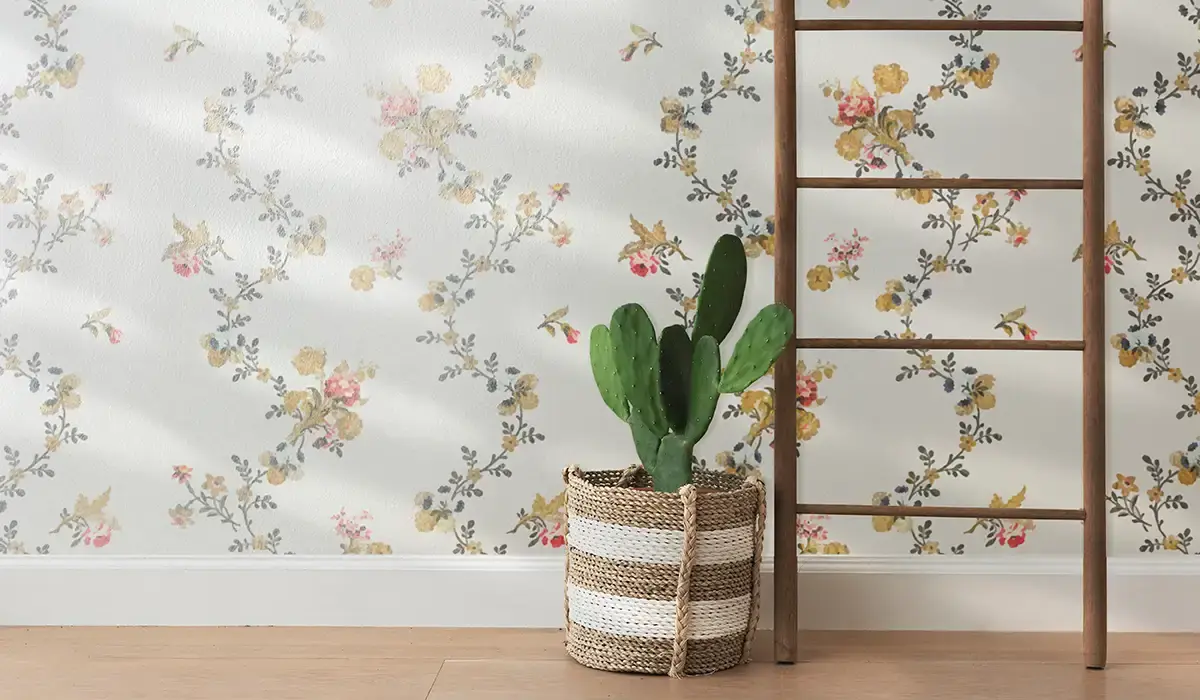Painting
Peel-and-Stick Wallpaper: Is It Really Simpler?

Peel Stick Wallpaper Guide: Everything You Need to Know Before You Install
Peel-and-stick wallpaper offers an easy, stylish upgrade for renters and homeowners who want flexible wall design without permanent commitment.
This Peel Stick Wallpaper Guide explains how to apply it, avoid issues, and get the best results from your DIY project.
Peel-and-Stick Wallpaper vs. Traditional Wallpaper
Peel-and-stick wallpaper requires less setup, cleanup, and equipment compared to traditional wallpaper, making it appealing for quick home makeovers.
While traditional wallpaper uses paste and water, peel-and-stick behaves more like a sticker with adhesive already applied to the back.
Interior designer David Quarles IV shares that traditional wallpaper may be messier but offers more flexibility for adjusting during installation.
“With peel-and-stick, you avoid paste spills,” Quarles explains. “But air bubbles and difficult alignments can still make installation tricky.”
Therefore, you gain simplicity with peel-and-stick, but you trade that for less room to adjust the material after positioning it.
You might also enjoy the articles on our other site: How to Pick the Perfect Paint Finish for Every Room
Peel-and-Stick Isn’t Always Easy to Hang
Despite fewer steps, many people underestimate the skill required to apply peel-and-stick wallpaper without flaws or frustration.
Wallpaper designer Molly Borman Heymont says many DIYers begin confidently but face unexpected struggles once the backing comes off.
“People assume it’s easier without glue,” she explains, “but handling large adhesive panels brings its own serious challenges.”
Because of its sticker-like nature, the wallpaper can stick prematurely or fold if not aligned or smoothed with patience.
This Peel Stick Wallpaper Guide recommends working slowly and measuring multiple times before committing any section to the wall.
Use a Partner for Best Results
Unlike smaller stickers, wallpaper comes in long, sometimes eight-foot sheets that are difficult to manage alone without creases.
Heymont notes the thickness and adhesive make solo applications harder, especially if you’re lining up patterns or edges precisely.
Therefore, this Peel Stick Wallpaper Guide suggests working with a partner to reduce bubbles and increase control during application.
One person should align the top edge, while another slowly peels the backing and smooths the wallpaper downward.
Quarles says this method prevents wrinkles, eliminates frustration, and delivers the cleanest results with the fewest reapplications or restarts.
Fixing Mistakes Isn’t Always Simple
Air bubbles, crooked placements, or peeling issues happen easily with peel-and-stick wallpaper, especially when working quickly or solo.
While pins can deflate bubbles, the material may wrinkle, stretch, or weaken with each re-stick attempt.
Heymont explains that repeated peeling leads to creases and reduces the strength of adhesive bonding over time.
By contrast, traditional wallpaper lets you slide the panel into position before the glue dries, allowing smoother pattern alignments.
Therefore, always plan your layout carefully and use gentle pressure to avoid damage or excessive repositioning during installation.
Invest in Quality Wallpaper
Not all peel-and-stick wallpapers offer the same performance or durability, especially when comparing inexpensive vinyl to higher-grade fabric.
Elizabeth Rees of Chasing Paper advises choosing premium materials that won’t stretch or tear during application.
“Inexpensive vinyl tends to warp,” Rees explains. “Our peel-and-stick fabric allows repositioning without damage or loss of adhesion.”
This Peel Stick Wallpaper Guide strongly recommends testing a sample first and avoiding budget brands if the design is complex.
Quality wallpaper stays intact longer, resists bubbling, and allows adjustments that won’t ruin the final design or smooth finish.
When to Hire a Professional Installer
Although peel-and-stick wallpaper allows DIY flexibility, you may prefer professional installation for difficult designs or large surface areas.
Complex patterns require precise alignment that’s tough without experience, tools, or enough space to handle the material properly.
If your wallpaper has detailed repeats or textured finishes, hiring an installer saves time, reduces waste, and ensures perfect placement.
You may also choose professional help when dealing with high walls, intricate corners, or slippery surfaces like tile or paneling.
Ultimately, know your limits and budget—sometimes professional support delivers better value than several damaged rolls of wasted wallpaper.
You might also enjoy the articles on our other site: 6 Preschool Models Every Parent Should Know
Final Thoughts on Peel-and-Stick Wallpaper
Peel-and-stick wallpaper transforms rooms beautifully without permanent changes or heavy-duty materials—perfect for renters or frequent redecorators.
However, success depends on preparation, teamwork, and patience to avoid mistakes that may require costly do-overs.
Use this Peel Stick Wallpaper Guide to choose quality materials, plan your design, and avoid the common issues DIYers face.
Feeling ready to try peel-and-stick wallpaper?
Discover more decorating tips, DIY tutorials, and renter-friendly design ideas by exploring the latest home guides on our website today!
